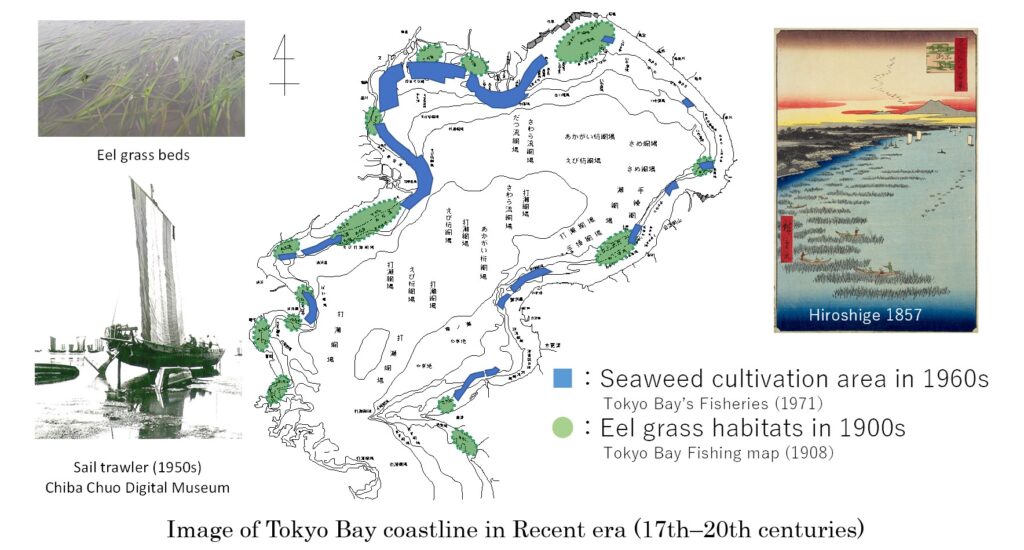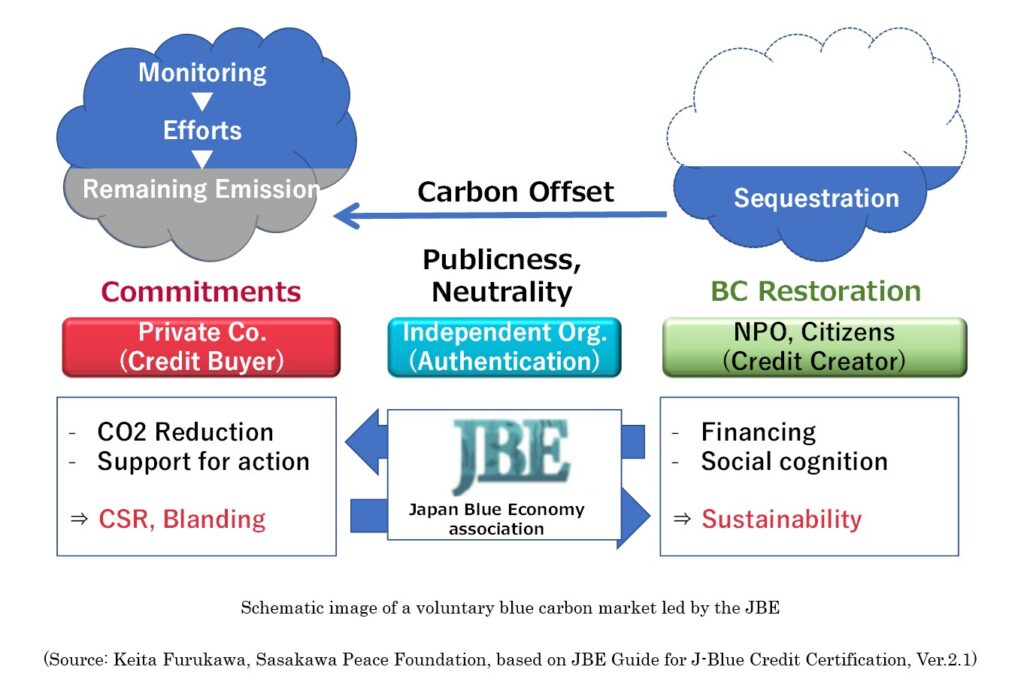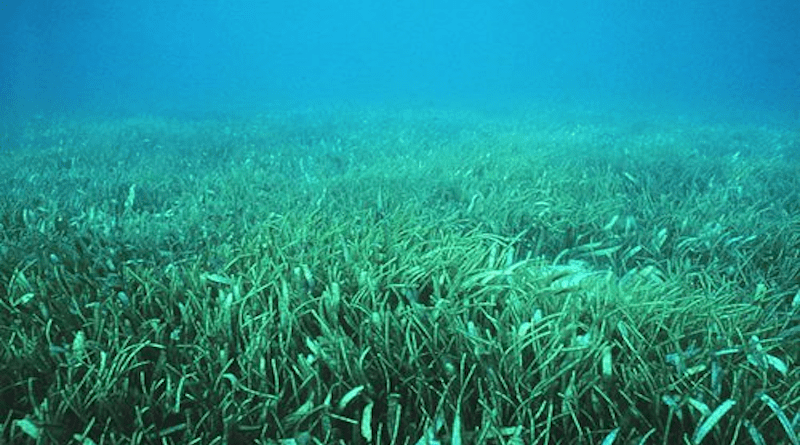Challenges And Expectations For Conservation And Restoration Of Seagrass Beds As Blue Carbon Ecosystems – Analysis
By ICAS
By Keita Furukawa*
Although coastal areas account for only about 7% of the ocean, they are highly productive. Ecosystems in the area support half of the world’s fish caught and supply 50% of animal protein and minerals to 400 million people of the world. The coastal ecosystems that support such productivity are unevenly distributed and are in danger of serious loss or degradation.[1] The East Asian seas are home to 4 million hectares of mangrove forests, 3 million hectares of seagrass beds, and other blue carbon ecosystems that are hotspots of productivity and biodiversity and are suffering from a very high rate of loss.[2]
Japan is an island nation that stretches from the subarctic to subtropical zones. The cold currents from the north and warm currents from the south have led to the spread of diverse seagrass beds and seaweed communities, the productivity of which has supported the development of coastal areas. For example, in Tokyo Bay 400 years ago (Edo-era), the bay’s waterfront was covered with tidal flats and eelgrass beds. A wide variety of fish and shellfish were harvested by towing nets with sailboats over the eelgrass beds. The cultivation of seaweed, brown algae (nori), also flourished, and a superimposition of the eelgrass beds shown on a Edo-era’s fishing grounds map and seaweed cultivation area shown on a 1960s map reveals that the Tokyo Bay coastline was covered by a continual green belt. Based on the high productivity of the sea and the diversity of its inhabitants, a rich food culture and a sustainable society have been built.

Seagrass beds, coral reefs, tidal flats, and mangrove forests have the ability to capture carbon (blue carbon), and the preservation, restoration, and creation of such ecosystems are expected to contribute to climate change mitigation.[3] Blue carbon, like carbon captured by forests and other terrestrial ecosystems (green carbon), is captured through the absorption of carbon dioxide by photosynthesis, mainly by phytoplankton, microalgae, seaweed, and seagrasses, which are generated, grow, and decompose in a short-term cycle (several days to several years). It is now known that a significant fraction of them contribute to carbon sequestration by being deposited on the seafloor, transported to the deep sea, and remaining at the sea environment as a refractory fraction.[4]
Thus, it has been pointed out that the conservation, restoration, and creation of blue carbon ecosystems have co-benefits both in combating climate change and conserving biodiversity. However, the activity has not been mainstreamed. One reason is that the process is in the ocean and is not widely visible by the public, making it difficult for private companies to invest in the project. Moreover, the management of the ecosystem requires detailed manual work, making it difficult to apply industrial methods.
Against this situation, for the past 20 years, NPO groups in Japan have been leading activities to restore eelgrass beds through seeding and transplantation, and workshops on wakame seaweed cultivation in port areas. Through these activities, the development of methods for ecosystem restoration has progressed, and activities are now being promoted throughout Japan. This is being driven by the development of the blue carbon market through voluntary carbon credit certification.
Currently, a certification organization called Japan Blue Economy association (JBE) is taking the lead in establishing a system in 2021 to use blue carbon generated by citizens, fishermen, and businesses as carbon offsets for purchasing companies.[5] In 2023, 21 projects were certified for 3,733.1 t-CO2. Certified Blue Carbon is purchased by companies to offset their carbon emissions, and is used for corporate CSR and branding, and is returned to the Blue Carbon creators as part of the funds used to ensure the sustainability of their activities.

(Source: Keita Furukawa, Sasakawa Peace Foundation, based on JBE Guide for J-Blue Credit Certification, Ver.2.1)
However, monitoring for getting the certification of blue carbon credits requires a high scientific knowledge and resources, and its continuous implementation is difficult. To mainstream the conservation, restoration, and creation of blue carbon ecosystems attract private sector investment and initiate citizens, fishermen, and other local stakeholders participation, it is important to further improve the system and accumulate experience by expanding it to diverse regions.
On December 27, 2022, the Japanese Ministry of Land, Infrastructure, Transport, and Tourism (MLIT) issued a press release on the promotion of “Blue Infrastructure Expansion Project for Life-Nurturing Ports”. Focusing on the effects of marine and coastal ecosystems in terms of carbon dioxide absorption and water purification, the project aims to contribute to the realization of carbon neutrality through the expansion of carbon dioxide sinks and to enrich marine biodiversity. Through this project, the MLIT aims to expand seagrass beds, seaweed habitats, tidal flats, and other bio-symbiotic port structures by promoting public-private partnerships to take the lead in this effort. We are hoping that this policy decision will encourage more stakeholders to participate in the conservation, restoration, and creation of blue carbon ecosystems.
*About the author: Dr Keita Furukawa, Affiliated Research Fellow, the Ocean Policy Research Institute of the Sasakawa Peace Foundation (OPRI/SPF), Japan. He is also an affiliated professor at Yokohama National University and Tokushima University, and president of the Association for Shore Environment Creation (NPO).
Source: This article was published by ICAS
References
[1] IPCC, 2019: Summary for Policymakers. In: IPCC Special Report on the Ocean and Cryosphere in a Changing Climate [H.-O. Pörtner, D.C. Roberts, V. Masson-Delmotte, P. Zhai, M. Tignor, E. Poloczanska, K. Mintenbeck, A. Alegría, M. Nicolai, A. Okem, J. Petzold, B. Rama, N.M. Weyer (eds.)]. Cambridge University Press, Cambridge, UK and New York, NY, USA, pp. 3–35. DOI:10.1017/9781009157964.001
[2] Crooks, S., von Unger, M., Schile, L., Allen, C. & Whisnant, R. (2017) Understanding Strategic Blue Carbon Opportunities in the Seas of East Asia. Report by Silvestrum Climate Associates for Partnerships in Environmental Management for the Seas of East Asia (PEMSEA), Conservation International and The Nature Conservancy, with support from the Global Environment Facility and United Nations Development Program.
[3] Nellemann, C., Corcoran, E., Duarte, C. M., Valdés, L., De Young, C., Fonseca, L., Grimsditch, G. (Eds). 2009. Blue Carbon. A Rapid Response Assessment. United Nations Environment Programme, GRID-Arendal, www.grida.no
[4] Kuwae, T., Hori, M. (Eds). 2019. Blue Carbon in Shallow Coastal Ecosystems Carbon Dynamics, Policy, and Implementation. Springer, DOI:10.1007/978-981-13-1295-3
[5] “Home,” Japan Blue Economy Assocation. https://www.blueeconomy.jp/en/

